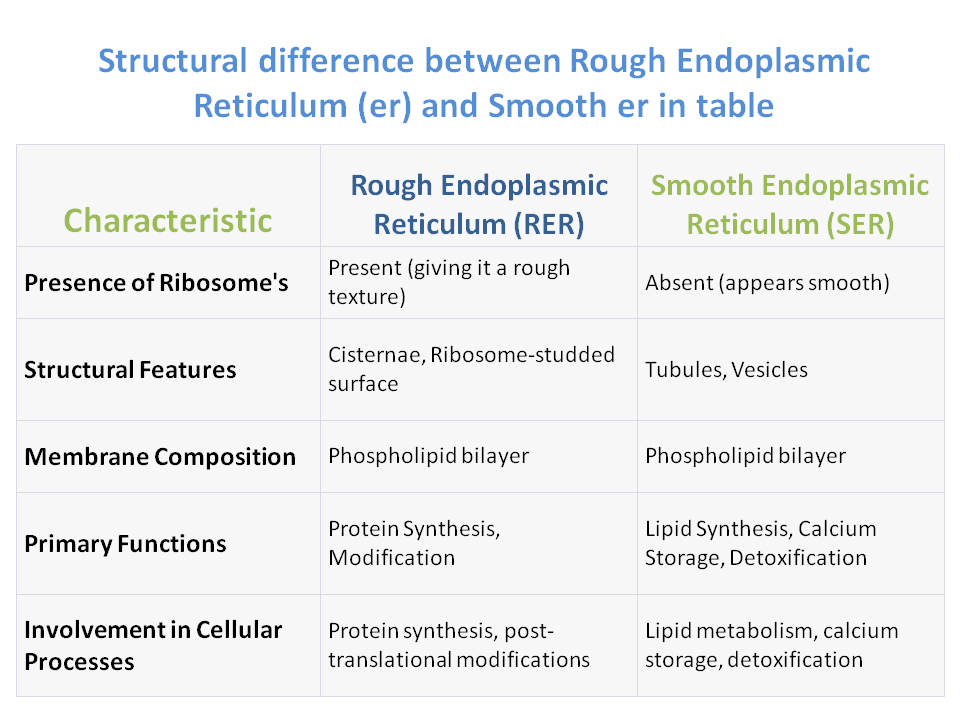The endoplasmic reticulum (ER) is a crucial organelle found in eukaryotic cells responsible for a variety of cellular processes. It comes in two distinct forms: rough endoplasmic reticulum (RER) and smooth endoplasmic reticulum (SER).

These two subtypes of ER differ significantly in their structures and functions, reflecting their unique roles within the cell.
Here, we will explore the structural difference between rough endoplasmic reticulum (er) and smooth er.
What is Rough Endoplasmic Reticulum (RER)
The RER gets its name from the rough appearance of its membrane, which is studded with ribosomes. These ribosomes are attached to the cytoplasmic surface of the ER, giving it a bumpy or rough texture. This ribosome association plays a fundamental role in the primary function of the RER, which is protein synthesis.
Structural characteristics of the Rough Endoplasmic Reticulum
- Ribosomes: The most distinctive feature of the RER is the ribosomes on its surface. These ribosomes function as the sites of protein synthesis and are responsible for the production of secretory and membrane proteins.
- Cisternae: The RER consists of a series of flattened, interconnected sacs called cisternae. These cisternae create a lumen or internal space within the RER where newly synthesized proteins are processed and modified.
- Membrane: The membrane of the RER is continuous with the nuclear envelope and extends throughout the cell. It contains a variety of enzymes involved in protein folding and post-translational modifications.
- Function: The primary function of the RER is to synthesize, modify, and transport proteins. Once proteins are synthesized on the ribosomes, they are translocated into the RER lumen, where they undergo further processing, including glycosylation and disulfide bond formation.
What is Smooth Endoplasmic Reticulum (SER)
The SER, in contrast to the RER, lacks ribosomes on its surface, which imparts a smooth appearance. The smooth ER is involved in various metabolic and lipid-related processes within the cell.
Structural characteristics of the SER
- Lack of Ribosomes: As the name suggests, the SER lacks ribosomes on its membrane, making it appear smooth. This absence of ribosomes distinguishes it from the RER.
- Tubules and Vesicles: The smooth ER is composed of tubules and vesicles that branch off from the rough ER. These structures contribute to its involvement in lipid metabolism, calcium storage, and detoxification processes.
- Membrane: Like the RER, the SER is composed of a phospholipid bilayer membrane that is continuous with the nuclear envelope and other cellular organelles.
- Function: The primary functions of the SER include lipid synthesis, storage of calcium ions, and detoxification of drugs and harmful substances. It is particularly crucial in the synthesis of phospholipids and steroids, such as cholesterol.